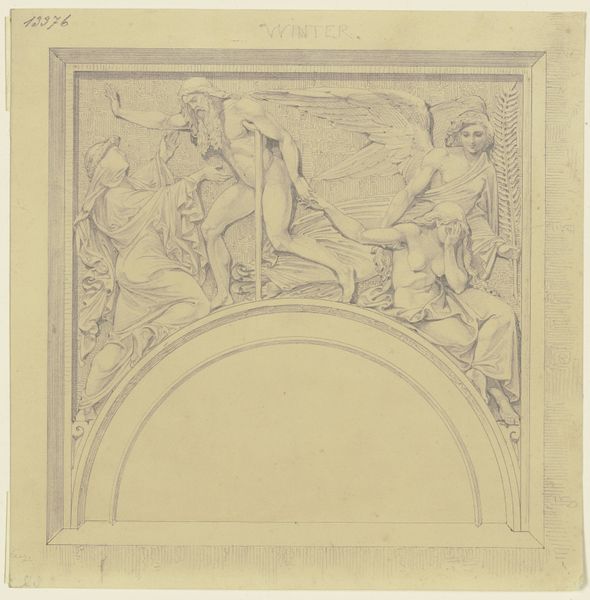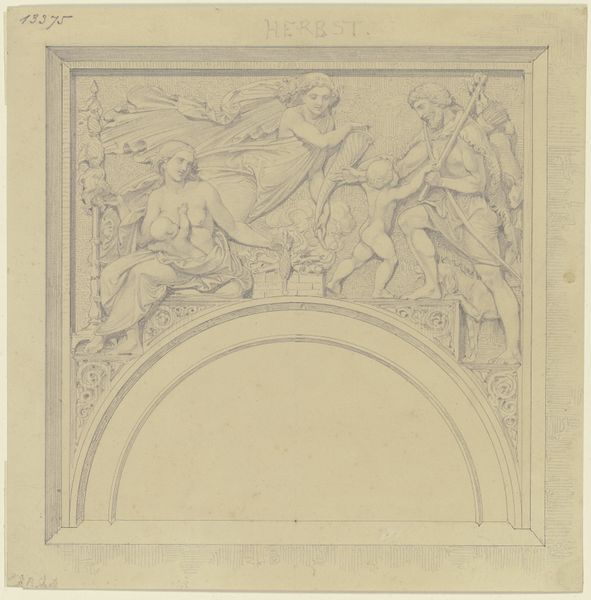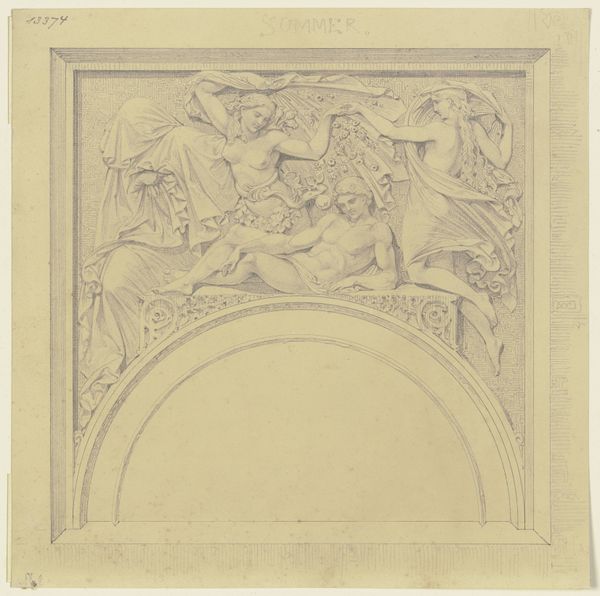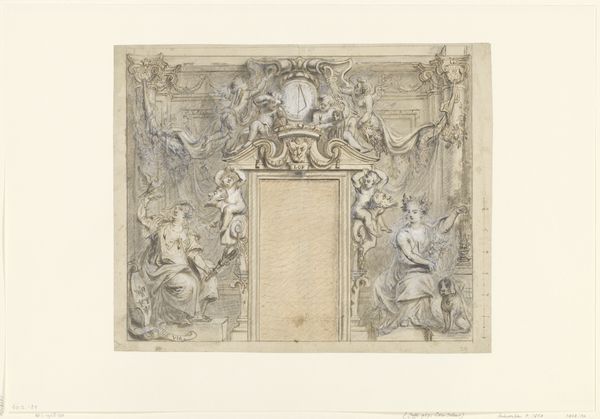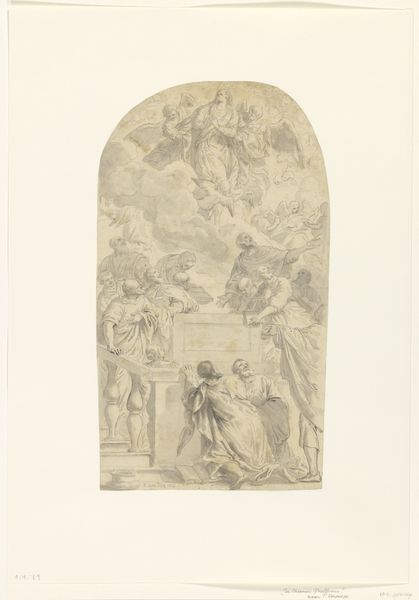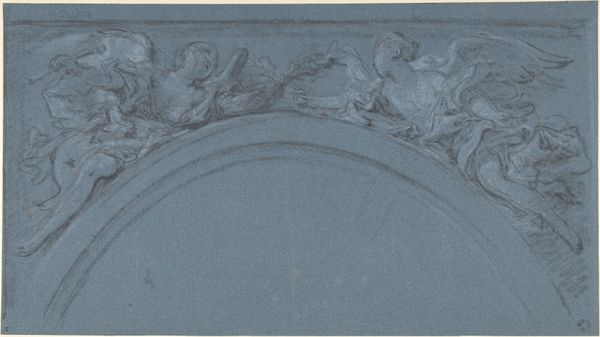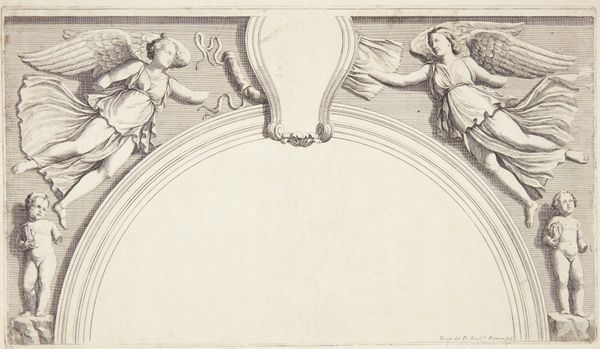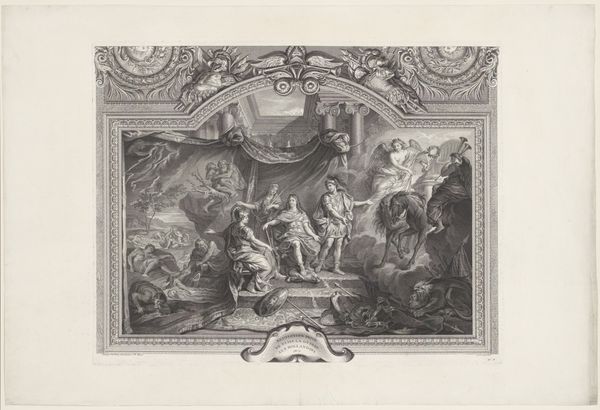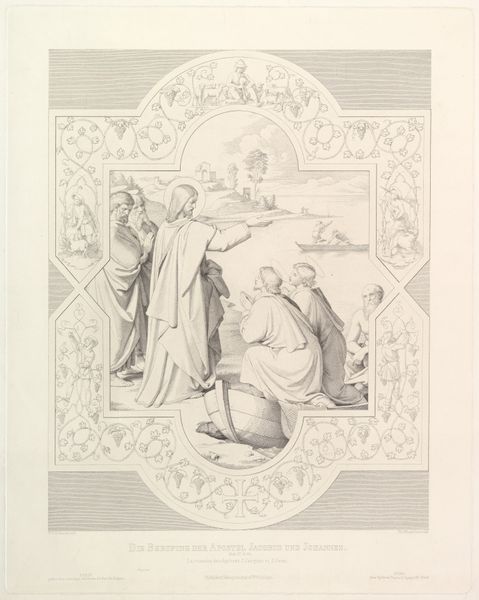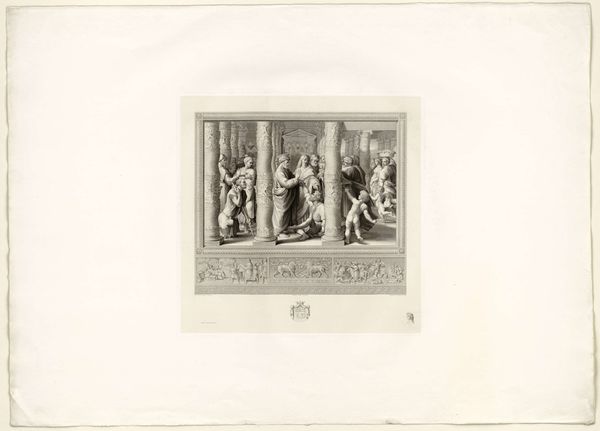
drawing, paper, pencil
#
drawing
#
16_19th-century
#
classical-realism
#
figuration
#
paper
#
german
#
pencil
#
history-painting
Copyright: Public Domain
Editor: We’re looking at "Spring," a pencil drawing on paper by Johann Baptist Scholl the Younger. It’s from the 19th century and, although rendered delicately, feels monumental, almost like a carved relief. I wonder about its context. What's your interpretation of this work? Curator: This drawing really speaks to the public role of art in the 19th century. The figures, reminiscent of classical sculpture, suggest a deliberate effort to elevate art by referencing a glorious past. Notice the symmetry, the idealized figures, and the emphasis on virtue, echoing neoclassical ideals championed by academies. Where do you think this drawing might have originally been displayed or used? Editor: It looks like a study for something bigger, perhaps a fresco or sculpture on a public building? The composition does seem like it wants to be larger. Curator: Exactly. Images like these helped reinforce social values and a sense of shared history. Art wasn't just about aesthetics, it was a tool for shaping public perception and promoting civic identity, sometimes to promote or disguise current affairs. How does knowing this affect your view of "Spring"? Editor: I see what you mean. It makes the seemingly simple image more complex, almost like propaganda. It's interesting to consider how artists navigate those socio-political expectations. Curator: Precisely. The artwork serves as a historical artifact, reflecting not just artistic skill, but the beliefs, aspirations, and power dynamics of its time. Understanding art as a cultural artifact challenges a purely aesthetic experience. Editor: I had not thought about the public dimension of this piece. Thinking of it as cultural and social statement offers a very new perspective for me. Curator: It shows how artistic intention interacts with audience interpretation within particular historical contexts. Keep looking, keep asking!
Comments
No comments
Be the first to comment and join the conversation on the ultimate creative platform.
